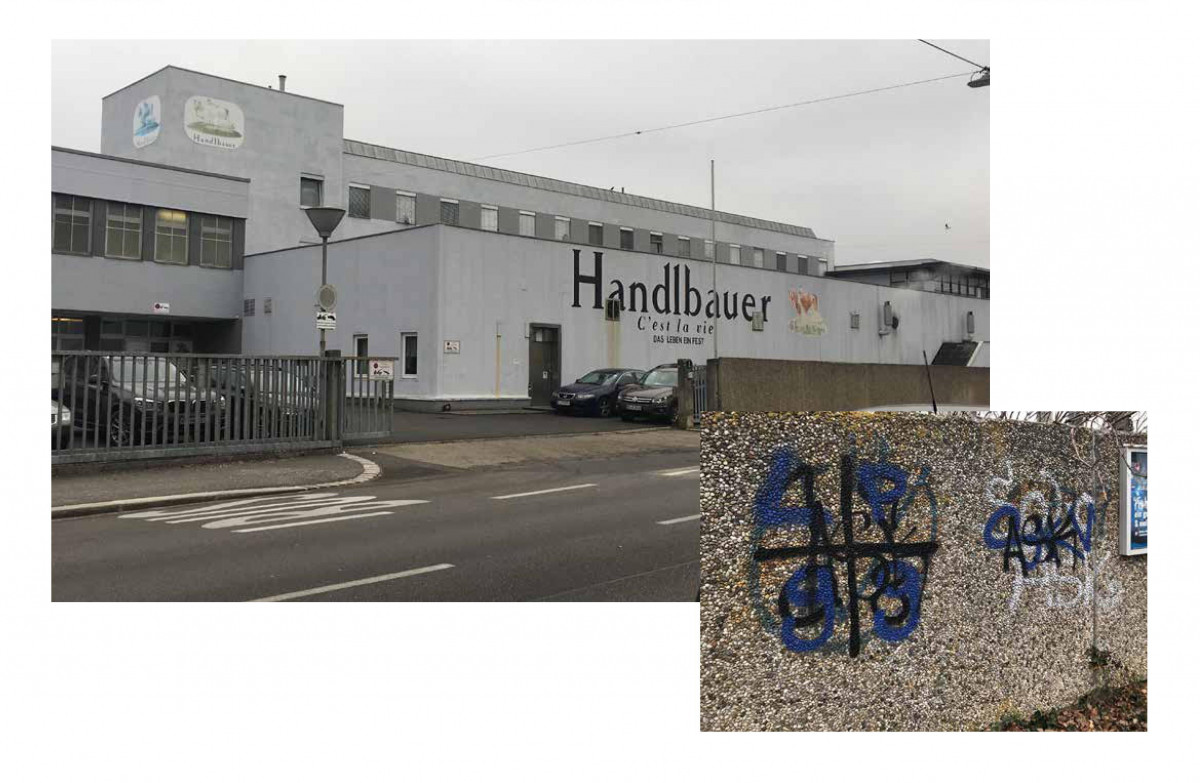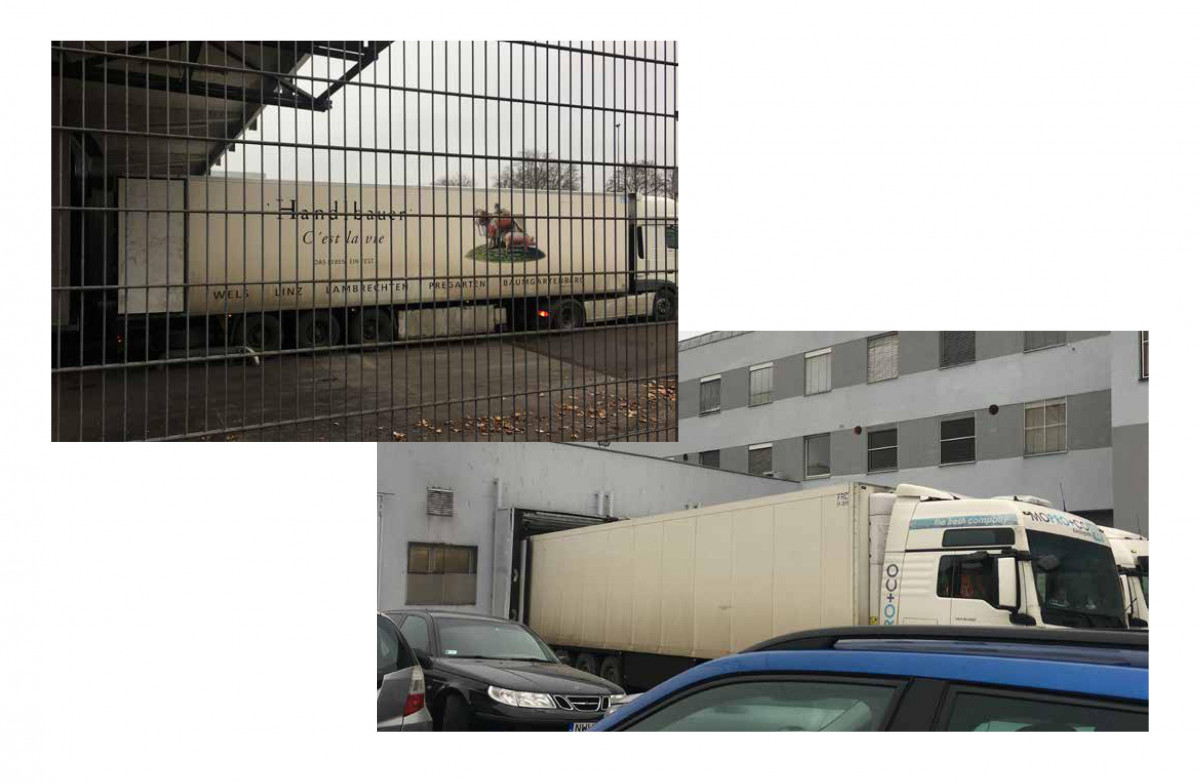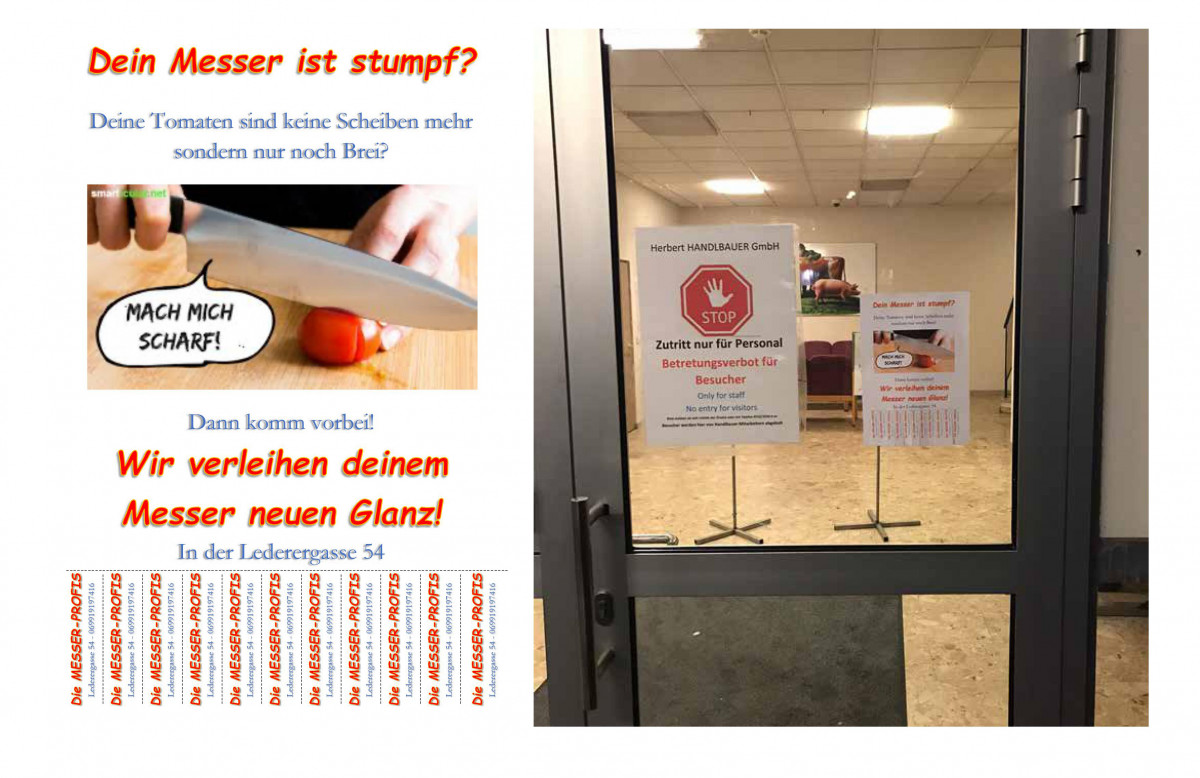„C’est la vie“ – A Slaughterhouse
„C’est la vie“ – A Slaughterhouse
PROJECT BY Karim Hussein & Johanna Kerschensteiner
“The slaughterhouse is in and of itself a repulsive, off-putting institution to most people, which, if it is not kept in a very clean condition, offers further inconveniences.” (August Lydtin 1883, quoted by Christian Kassung 1) The slaughterhouse at Linz Holzstraße presents itself as an “institution”with a deterring impact. Not (only) because animals are slaughtered and chopped up here – death is tangible – but because the place in its very construction is reluctant to trespassing: hermetically sealed off, with visual barriers and doors covered with stop and prohibition signs: “No visitors allowed”, “Parents are responsible for their children”, “Unauthorized persons are not allowed to enter”. These hygiene standards and barriers that had already been in place hardly tightened by the current corona restrictions.There is only one entrance to the complex, and it is for employees only. All doors are locked. The place is not very inviting. Goods are delivered via trucks. No sign of anyone. With the loading area open, the trucks drive backward to a warehouse door that is just the right size for the truck. No one gets on or off. C’est la vie – Life is a celebration is written on the wall of the building’s access area. The graffiti on the outer facade suddenly seem like secret messages, (futile?) attempts to communicate from the outside to the inside. In situ, it is difficult to imagine how a cow could recently have escaped from here.
To visit a slaughterhouse at dawn is not to witness the screaming of animals, to observe lively traffic of goods, or to watch people come and go. First and foremost, it is to perceive a strange smell that is hanging in the air. This smell is related to time: in the evening it is particularly offensive, in the summer the air is terrible down here, you can’t stand it. Our idea for an “infectious”object arises from the deterring and sealed-off place “slaughterhouse”in combination with the messages that are already in place: We post a leaflet for a (fictional) knife grinder on the door: Your knife is blunt? Your tomatoes are no longer slices, but just mashed? Then come on over! We’ll give your knife a new shine!When we return in the evening, the note has disappeared.
RESEARCH QUESTIONS:
What is the entrance situation like?
▪ There is only one entrance. This is only to be used by employees.
▪ All doors are locked.
▪ The place does not look very inviting.
What are the hygiene rules?
▪ Inside the building, the current Corona hygiene rules are in place: Keep your distance, wear a mask, no handshaking, and wash and disinfect your hands.
▪ Visitors are not allowed to enter the building
▪ Hygiene rules for the delivery of goods are not known to us.
Who passes the barriers and how?
▪ Employees are free to use the entrance, all others are not.
▪ Goods are delivered by trucks. No one is visible. Trucks back up to a warehouse door that is just the right size for the truck with the cargo area open.
▪ No one is getting on or off.
Summary/impressions
▪ Trucks with pigs and cows arrive in the morning.
▪ The intensity of smell depends on the day (time).
▪ Graffiti/tags on outside walls
▪ Slogan: C’est la vie – Life is a celebration
▪ At noon, more meat and goods are delivered than in the morning.
▪ A butcher is located right across the street from the slaughterhouse.
▪ The building is completely sealed off.
▪ Persons could not be sighted.
▪ There is visual protection everywhere.






